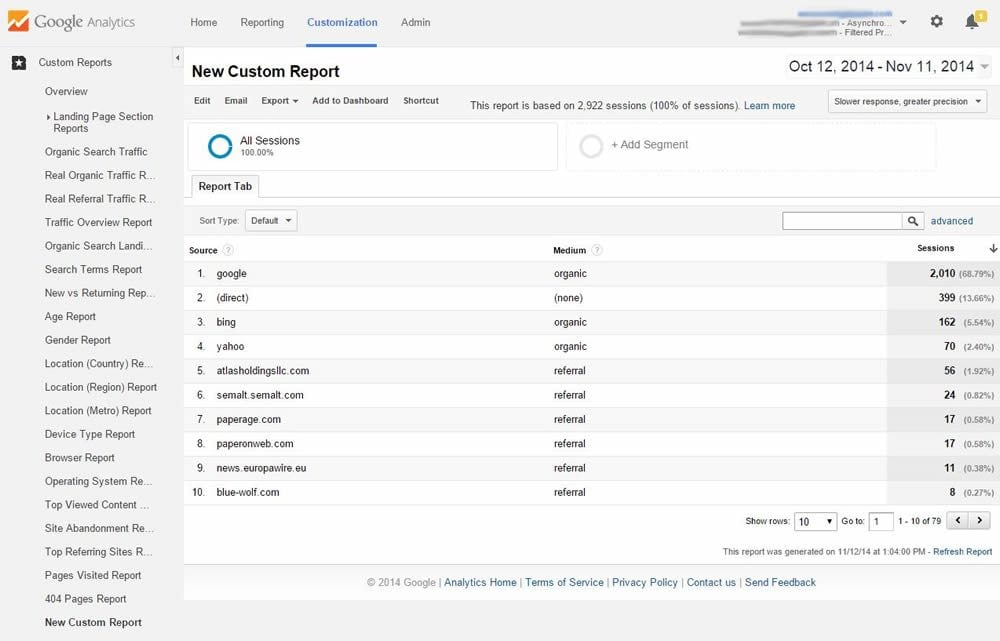Enhance Your Information Analysis Using Second Dimension in Google Analytics
Checking out the capacities of secondary dimensions in Google Analytics opens a realm of possibilities for refining information evaluation. The ability to dissect info better beyond the surface level offers a nuanced sight that can form critical choices. By layering extra dimensions onto main information sets, an even more elaborate story arises, clarifying customer communications and efficiency indications. This dynamic approach to data assessment holds the essential to unlocking concealed patterns and fads that can change just how organizations analyze their digital footprint.
Understanding Second Dimensions
In the realm of data analysis, a vital aspect to understanding is the concept of second measurements and their importance in drawing out much deeper understandings from Google Analytics reports. Secondary dimensions in Google Analytics refer to added criteria that can be contributed to the main dimension, enabling for an extra detailed analysis of data. By including second measurements, experts can sector and filter information to discover patterns, trends, and connections that may not be apparent when considering the data all at once. These secondary measurements can offer context and an extra thorough understanding of customer habits, web traffic sources, and various other essential metrics tracked by Google Analytics.

Benefits of Using Second Dimensions
When evaluating information in Google Analytics, the use of secondary measurements supplies vital insights right into individual behavior and performance metrics. By including an additional dimension to your main information, you can dive deeper right into the characteristics of your website site visitors and their communications.
Additionally, second measurements boost the context of your key data, offering a much more thorough view of customer engagement and efficiency metrics. Overall, the usage of second dimensions in Google Analytics can dramatically enhance the deepness and high quality of your data analysis, leading to more informed decision-making and improved end results.
Just How to Add Secondary Measurements
By integrating second dimensions in Google Analytics, customers can gain deeper insights right into their information evaluation procedure, allowing for more comprehensive analysis of individual habits and performance metrics. Including additional measurements is a straightforward procedure that can significantly improve the depth of evaluation. As soon as in the record, locate the "Second measurement" tab over the information table.
Studying Information With Second Measurements
Making use of additional find more info dimensions in data analysis offers an extra thorough understanding of user actions and efficiency metrics. By adding a secondary dimension to your main data embeded in Google Analytics, you can dive much deeper into the attributes of your web site visitors and their interactions. As an example, integrating the key measurement of 'source/medium' with the additional measurement of 'landing page' can expose which particular pages are attracting website traffic from various sources, assisting you enhance these web pages for better engagement.

Fundamentally, evaluating information with additional dimensions empowers you to acquire beneficial insights into user actions, identify trends, and make informed choices to boost the efficiency of your digital buildings.
Ideal Practices for Secondary Dimensions
In data analysis, incorporating second dimensions successfully can dramatically enhance the depth of insights stemmed from metrics and customer behavior patterns. When using additional dimensions in Google Analytics or any various other analytical device, it is vital to abide by best techniques to make sure the precision and relevance of the data evaluation.
One secret ideal technique is to thoroughly choose additional measurements that match the key dimension being evaluated. Choosing additional measurements that give added context or additional segmentation can use a much more comprehensive understanding of the data. It is also necessary to prevent overcomplicating the analysis by including way too many additional dimensions, which might result in confusion or dilution of redirected here insights.
Additionally, it is recommended to go to my site explore different combinations of primary and additional measurements to discover brand-new correlations and fads. On a regular basis refining the option and assessing of secondary measurements based on the details objectives of the analysis can cause even more workable understandings. By following these best methods, data analysts can utilize secondary measurements efficiently to enhance the total information analysis process and decision-making abilities.

Final Thought
To conclude, including secondary measurements in Google Analytics is crucial for a thorough information evaluation technique. By leveraging additional measurements along with main ones, analysts and marketing experts can reveal useful understandings and relationships that can inform decision-making and enhance digital advertising and marketing techniques. Comprehending just how to effectively make use of secondary dimensions and complying with finest practices will enable experts to extract purposeful information and boost their total performance metrics.
Second dimensions in Google Analytics refer to additional criteria that can be added to the primary measurement, allowing for an extra detailed evaluation of information. By incorporating second measurements, experts can segment and filter data to reveal patterns, fads, and connections that might not be noticeable when looking at the data as a whole. Combining the primary measurement of 'source/medium' with the second measurement of 'touchdown web page' can expose which certain pages are bring in website traffic from different sources, helping you optimize these pages for better involvement.
One secret best method is to carefully choose second dimensions that enhance the primary measurement being analyzed. By following these finest practices, data analysts can leverage secondary dimensions successfully to improve the general data evaluation procedure and decision-making capabilities.